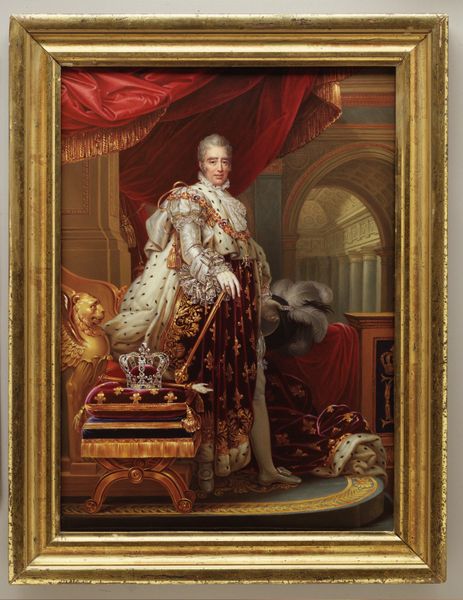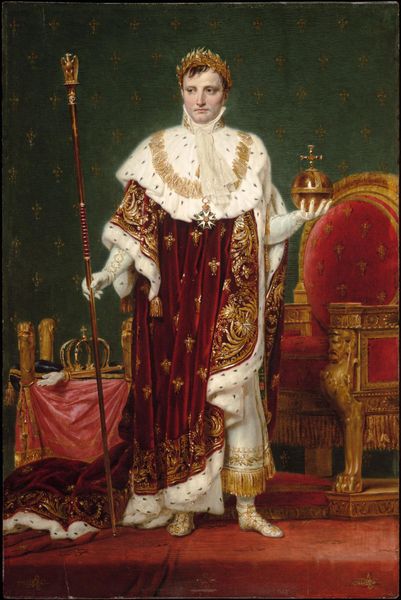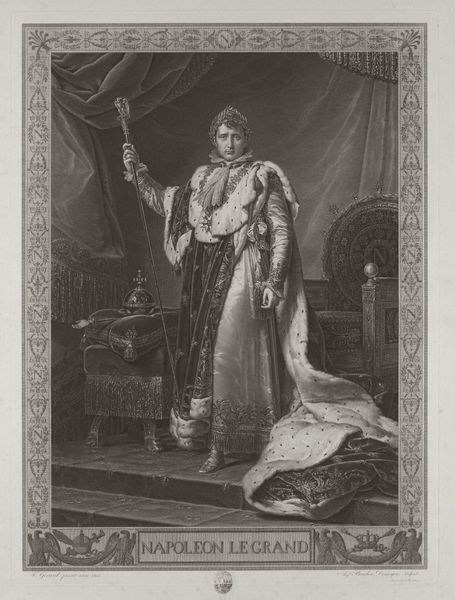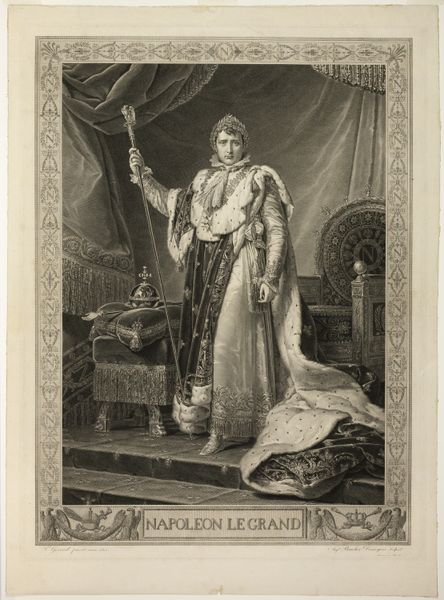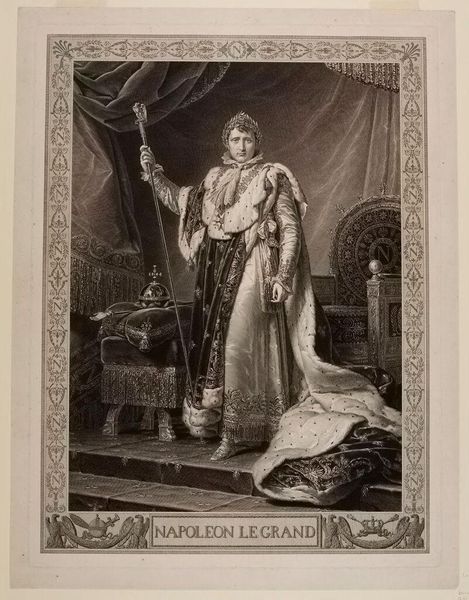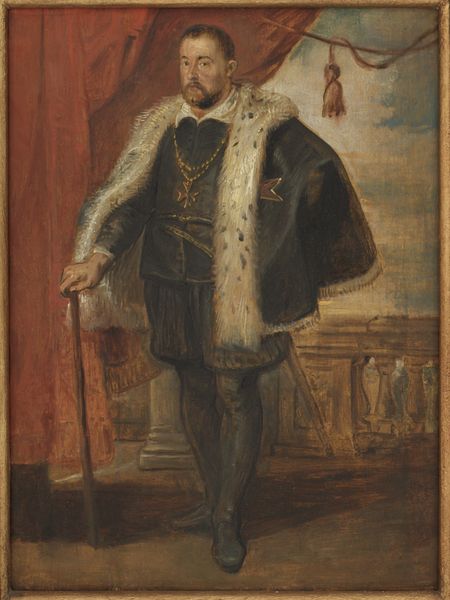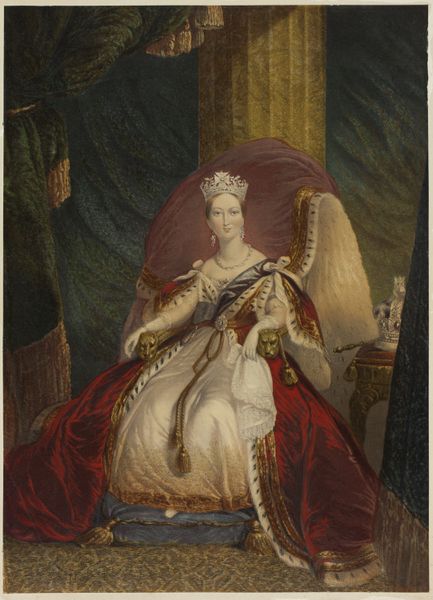
painting, oil-paint
#
portrait
#
neoclacissism
#
painting
#
oil-paint
#
oil painting
#
classicism
#
history-painting
Copyright: Public domain
Editor: This is François Gérard's "Portrait of Napoleon I," an oil painting that seems to capture Napoleon in his full imperial glory. The colors are quite opulent, and there’s a lot to take in. What catches your eye when you look at this painting? Curator: I immediately notice the calculated use of symbolic imagery. Notice the laurel wreath? It's a deliberate reference to Roman emperors, a symbol of victory and authority. But it also speaks to Napoleon’s ambition to create a new Roman Empire. Do you see how the scepter reinforces that narrative? Editor: Absolutely. The scepter, the robe, the throne behind him – it's all very consciously constructed. Are these just symbols of power, or is there something more? Curator: Think about the psychological weight of these symbols, what they represented to people then and even now. Napoleon wasn't just presenting himself as a ruler; he was crafting a persona, carefully cultivating a myth. He used imagery to solidify his power. Consider how those images would impact culture in the years and centuries that follow. How does that relate to icons today? Editor: It makes me think about how modern leaders also use imagery and symbols to create a specific perception of themselves. Perhaps the intention behind an image can alter its power and symbolic nature over time. Curator: Precisely. An image, in isolation, is rarely the whole story. It is often a window onto a shared cultural memory or an aspirational vision, constantly evolving. Editor: I never thought about the historical memory connected to an image of someone. Now, looking at this piece, I understand how portraiture can communicate cultural narratives.
Comments
No comments
Be the first to comment and join the conversation on the ultimate creative platform.

